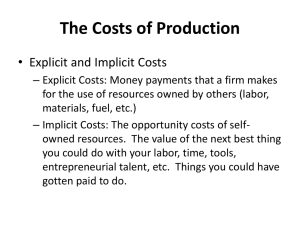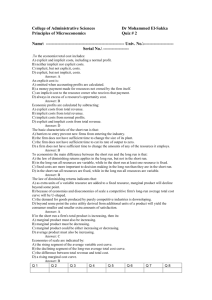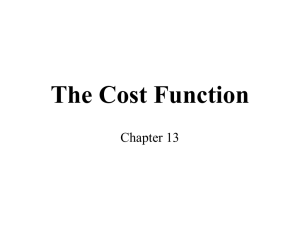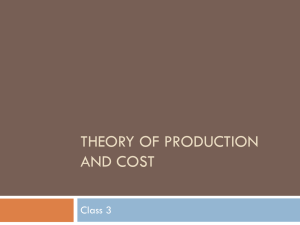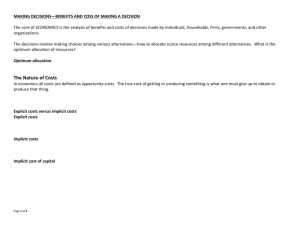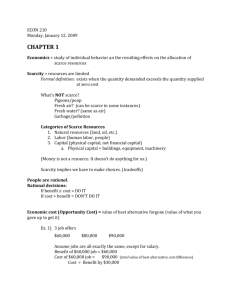The Rules of Decision Making
advertisement
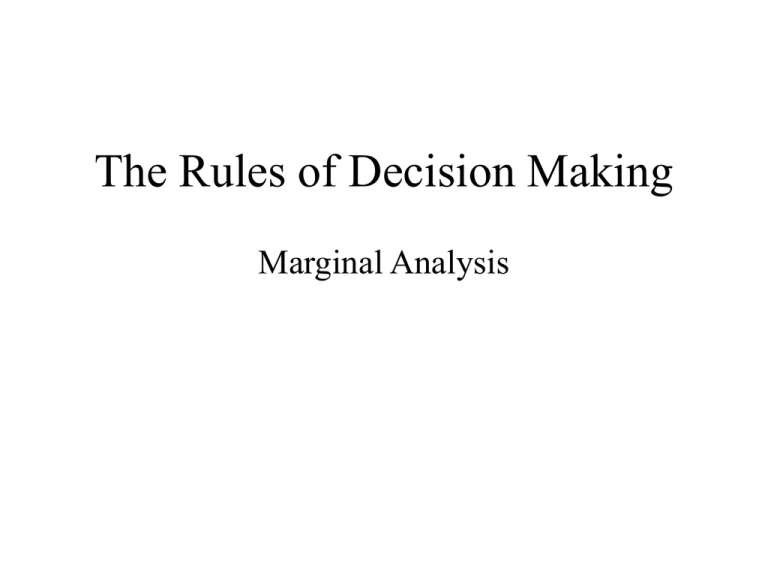
The Rules of Decision Making Marginal Analysis Opportunity Costs • Because our resources are scarce every decision that we make entails an opportunity cost • Opportunity costs are not always obvious • Explicit costs: costs requiring actual payments • Implicit costs: foregone benefits of (already owned) resources consumed or used in production of a good or service » Implicit cost of capital » Implicit cost of labor » Implicit cost of goods (already owned) • Sunk Costs: Already incurred costs that cannot be recovered and, thus, our decisions will have no effect on Accounting Profit vs. Economic Profit • Accounting Profit = Total Revenue - Total Explicit Costs • Economic Profit = Total Revenue – Total Explicit Costs - Implicit Costs • Accounting profits tend to overstate profits; when implicit costs are not accounted for a reported business profit is an exaggerated measure of profit • When there are implicit costs “accounting profit” is greater than “business profit” • When a firm’s accounting profit is equal to its implicit costs its “economic profit” is zero and its accounting profit is considered “normal profit” Making Decisions at the Margin • Most of our decisions are made following our “marginal analysis” of costs and benefits • To achieve a given outcome we often have to make a choice from among alternative means; we normally try to make the “least costly” choice among the available means • Some times our decisions result in benefits as well as costs; • • • • • How much food should you buy? How many years of schooling should you have? How many hours should you work? How many workers should you hire? How much should save/invest? Marginal Costs vs Marginal Benefits • Decreasing returns and increasing marginal costs: Hours worked 0 1 2 3 4 5 Total Output M.Output 0 0 10 10 18 8 24 6 28 4 30 2 M.Cost 2 2.50 3.33 5 10 Marginal Costs vs Marginal Benefits • Decreasing returns and increasing marginal costs: Hours worked 0 1 2 3 4 5 M.Cost 0 2 2.50 3.33 5 10 T.Benefit 0 20 27 32 37 36 M.Benefit 20 7 5 5 1 The Optimal Choice MC $ 5 MB 0 QO= 4 Q
